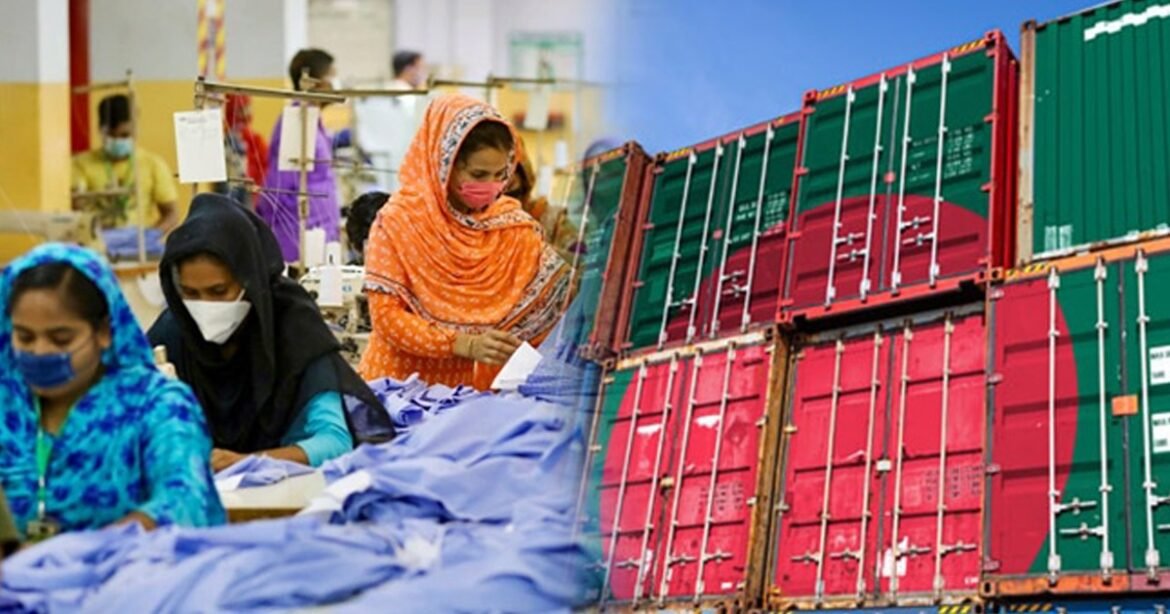According to a World Trade Organization (WTO) report, in 2022, Bangladesh suggestively prolonged its share of global garment trade, surpassing its previous position. The country’s clothing exports rose to 7.9% in 2022 from a mere 2.5% in 2005, effectively more than tripling its market share. Despite this remarkable growth, Bangladesh has managed to retain its second position among the world’s leading apparel-exporting nations.
You can also read: Ministries optimistic about Bangladesh joining the RCEP after positive feasibility study from Tariff Commission
Despite encountering challenges in the global markets and grappling with increased production costs due to escalating prices of raw materials and energy, Bangladesh continues to hold its place as the world’s second-largest exporter of clothing, trailing only behind China.
Bangladesh Outperforms by $10B more
In 2022, China remained the leading clothing exporter globally, despite a slight decline in its share of global clothing exports from 32.8% in 2021 to 31.7%. The total value of China’s clothing exports amounted to $182 billion.
During the same year, Vietnam, the third-largest apparel-exporting nation, experienced significant growth in market share, increasing from 5.8% in 2021 to 6.1%. Vietnam’s clothing exports reached a total value of $35 billion.
Comparatively, Bangladesh outperformed Vietnam in 2022 by exporting apparel worth approximately $10 billion more. Interestingly, in 2018, both countries exported the same amount of clothing, with each generating $32 billion in export value.
In 2022, Türkiye ranked fourth in clothing exports with a 3.5% global share, exporting $20 billion worth of apparel. India followed closely with a 3.1% market share and garment exports valued at $18 billion.
The WTO report highlighted Bangladesh’s significant rise in rankings among the 50 largest merchandise traders, moving from 53rd in 2019 to 49th in 2022. China maintained its position as the largest merchandise trader in 2022.
Notably, in 2021, Bangladesh reclaimed its second position in the global clothing export market, after previously being surpassed by Vietnam in 2020.

Bangladesh’s clothing exports rank 2nd amid challenges
Despite encountering challenges in the global markets and contending with increased production costs resulting from price hikes in raw materials and energy, Bangladesh has successfully maintained its position as the world’s second-largest exporter of clothing, coming second only to China.
As per the ‘World Trade Statistical Review 2023’ report released on 31st July, Bangladesh’s clothing exports amounted to $45 billion in 2022, capturing a significant 7.9% share of the global market. This noteworthy achievement is a substantial increase from the 6.4% share in 2021 and the 6.3% share in 2020, indicating a steady and impressive growth in the country’s market share.
Strong Exports Drive Bangladesh’s Market
BGMEA President Faruque Hassan revealed that Bangladesh experienced a market share surge despite global economic challenges, driven by successful exports from the previous year. Factors such as high-value product production, sector diversification, and expansion into new markets like Japan, India, and Korea contributed to this growth. Moreover, redirected orders from China and Vietnam created additional growth opportunities, although obstacles from the National Board of Revenue and customs posed challenges.
Meanwhile, BKMEA Executive President Mohammad Hatem highlighted the declining global market share of Chinese apparel, presenting prospects for other exporters. He emphasized the potential for further market share growth if the government ensures uninterrupted gas and electricity supply. Former BGMEA President, Kutubuddin Ahmed, attributed the increased market share to buyer trust in on-time delivery and high-quality products.
Despite these challenges, Bangladeshi garment exporters displayed resilience, achieving a notable 5.65% increase in ready-made garment exports, totaling $23.99 billion in the first half of 2023, as reported by the Export Promotion Bureau.
Expansion to Potential New Market
Citing official data, the report highlights Australia, Japan, and India as key markets that have contributed to the increased export of apparel products from Bangladesh, with earnings from each of these countries surpassing one billion dollars. In contrast, the country’s export revenue from major existing markets like Germany and the USA declined during the same period. Industry experts point out that there are 15 potential markets beyond the three traditional export destinations (the United States, the European Union, and Canada), including Australia, Brazil, Chile, China, India, Japan, Korea, Mexico, Russia, South Africa, the United Arab Emirates, Malaysia, Saudi Arabia, New Zealand, and Turkey.
Prime minister Sheikh Hasina on the celebration event of National Textiles Day-2022, asked all concerned to explore new markets for Bangladeshi garments with invention of newer items keeping pace with its ever-changing trend.
Potential Challenges of RMG
Product development
Bangladesh’s apparel exports have historically focused on the European Union and North American markets, which presented challenges in diversifying into other markets. The need for tailored product development and consumer preferences hindered market expansion efforts. However, there has been a recent positive shift with the country’s successful export performance in new markets. Despite this achievement, sustained efforts are necessary to understand consumer preferences and adhere to diverse market norms when exploring new avenues for apparel business expansion.
Technological advancement
By 2023, Bangladesh’s apparel industry has experienced significant mechanization, positioning the country as a prominent exporter of ready-made garments through the adoption of modern technologies. Technological advancements, such as 3D printing and rapid prototyping, have revolutionized the design, production, and sales of clothing, enabling unprecedented speed and accuracy. Being located in a competitive market, Bangladesh must invest in technological progress to enhance productivity and efficiency. Moreover, improving quality control measures is essential to minimize defective products and maintain competitiveness.


